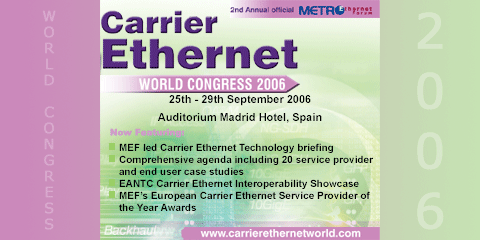|
|

article page | 1 | 2 | 3
IMS, an IP/SIP-based architecture, has its origins in Europe for GSM migration into 3GPP networks as a means to provide multimedia applications in a wireless environment. The basic concept is to create an infrastructure design that allows any session based feature (voice as well as non-voice applications, such as messaging or content) to be added easily and without cross product impact. Today, IMS is designed to enable IP services for mobile, cable TV, and traditional fixed-line operators; although, standardization is still somewhat slow.
The 3GPP Group, comprising mobile operators and equipment vendors, designed the IMS architecture to address the need for consistent service delivery over all IP mobile networks by both the network operator and a variety of third-party service providers. Increasingly, fixed and mobile operators are seeing this architecture as the basis for a more general convergence in all networks, and as the basis of an evolution strategy to take them from circuit- and IN-based solutions to IP multimedia services.
|
|
"The imagination of the content billing experts is fertile, but realists in the big service providers know that they can’t take this too far..." |
|

Application Servers are not actual components of the IMS network, but rather sit above the network. Figure 5 details the Application Servers accessible to the users of the IMS network to provide value-added multimedia services to those service subscribers. The application servers will have the ability to submit charges to the IMS for the services they provide to the IMS user community.
To accomplish this interoperability, and to enable IMS multifunctional operation across networks, gateways and platforms that support multiple transport protocols are necessary. Presently, IMS is based on SIP. As addressed earlier, SIP is not a standard implementation; it varies considerably among vendor interpretations and operations thereby creating incompatible implementations and disparate operations. A SIP-only platform cannot accommodate legacy
|
|
|
|

Figure 4 details the IMS capabilities that enable the connection of people, processes and information in a way that allows service providers to become more flexible in response to the dynamics of markets, subscribers and competitors around them. IMS offers operators the opportunity to build an open IP-based service infrastructure that enables deployment of new services combining standard voice service with a variety of data and multimedia features. For example, it is now possible to use a WiFi network in an office, cellular on the move, and WiFi in the home (via a VPN), using the same number with the same look and feel by using local SIP clients to maintain feature sets while switching the handsets from mobile use to fixed line use.
From the onset, IMS applications are configured for single mode operation such as push-to-talk. To support multi-functional applications and integrated services from IN and IP systems, service brokering functions are mandatory. In order to provide access to multiple applications through a self-service portal/cockpit, IMS requires interoperability and event integration from among legacy systems such as voice mail, short message, OSS, etc. and NGN applications such as presence and identity. Interoperability across network boundaries and transport protocols is extremely difficult to accomplish. This is why very few applications work across network boundaries (e.g., mobile networks across to fixed networks) without substantial application modifications and gateway customizations.
|
|

protocols, such as AIN and WIN, for successful deployment of applications in the IMS arena. Within the IMS standards is the call session/state control function (CSCF) – the brains of IMS – that allows all traffic to be carried over an IP network via an IMS service control (ISC) interface, which runs the SIP protocol. Until the infrastructure fully supports CSCF functions, CSCF platforms will be deployed in overlay configurations and not as replacements of infrastructure systems such as SCPs, intelligent peripherals and 800 databases. It is only with multiprotocol platforms that operators can successfully address this service brokering functionality. An organizational model of the converged IMS infrastructure is shown in Figure 6.
European operators have made significant commitments to IP IMS networks, while US operators are taking a more deliberate migration approach, due in large part to the significant investment in legacy network elements and applications including OSS/BSS. In Asia, IMS is further behind the implementation curve due to the minimal investments in 3G and converged services. Insight Research expects that IMS will experience slow, increasing acceptance with expanded investments and rollouts in 2006/2007 and beyond. In light of this estimation, IMS is on all operators’ product roadmaps.
|
|
|
|




